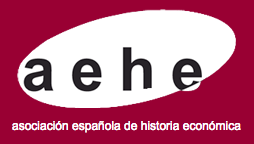Salarios de mujeres e ingreso familiar de subsistencia en Mendoza (Argentina) a principios del siglo XX
DOI:
https://doi.org/10.33231/j.ihe.2023.04.001Palabras clave:
condiciones de vida, salarios de mujeres, ingreso familiar de subsistencia, brecha salarial, N36, O14, I30Resumen
Este artículo tiene como objetivo estimar los salarios de mujeres y el peso relativo de los mismos en los ingresos
de las familias de sectores populares en el ciclo expansivo de la economía argentina y de la ciudad de Mendoza, en particular entre fines del siglo xix y 1914. Específicamente, se analiza la evolución y contribución de las remuneraciones de lavanderas, costureras, cocineras y planchadoras al ingreso total de grupos convivientes de diversa conformación, registrados por el segundo censo nacional de población de 1895. Asimismo, se examina la brecha salarial en relación con los varones y la movilidad del trabajo femenino en las instituciones públicas. Por último, se comparan los salarios de costureras y planchadoras con los percibidos por las
empleadas de la Ciudad de Buenos Aires, atendiendo a algunos precios indicativos del costo de vida (pan, carne
y alquiler de una pieza) y las brechas salariales relativas a ocupaciones masculinas, como el peón albañil.
Descargas
Descargas
Publicado
Cómo citar
Número
Sección
Licencia
Derechos de autor 2023 Patricia Olguín, Beatriz Bragoni

Esta obra está bajo una licencia internacional Creative Commons Atribución-NoComercial-SinDerivadas 4.0.
Aquellos autores/as que tengan publicaciones con esta revista, aceptan los términos siguientes
- Los autores/as conservarán sus derechos de autor y garantizarán a la revista el derecho de primera publicación de su obra, el cuál estará simultáneamente sujeto a la Licencia de reconocimiento de Creative Commons Reconocimiento-No comercial-Sin obra derivada 4.0 Internacional que permite a terceros compartir la obra siempre que se indique su autor y su primera publicación esta revista, y no permite hacer uso comercial de la misma ni tampoco obras derivadas.
- Los autores/as podrán adoptar otros acuerdos de licencia no exclusiva de distribución de la versión de la obra publicada (p. ej.: depositarla en un archivo telemático institucional o publicarla en un volumen monográfico) siempre que se indique la publicación inicial en esta revista.
Plagio y fraude científico
La publicación de un trabajo que atente contra los derechos de propiedad intelectual será responsabilidad de los autores/as, que serán los que asuman los conflictos que pudieran tener lugar por razones de derechos de autor. Los conflictos más importantes pueden darse por la comisión de plagios y fraudes científicos.
Se entiende por plagio:
- Presentar el trabajo ajeno como propio.
- Adoptar palabras o ideas de otros autores sin el debido reconocimiento.
- No emplear las comillas u otro formato distintivo en una cita literal.
- Dar información incorrecta sobre la verdadera fuente de una cita.
- El parafraseo de una fuente sin mencionar la fuente.
- El parafraseo abusivo, incluso si se menciona la fuente.
Las prácticas constitutivas de fraude científico son las siguientes:
- Fabricación, falsificación u omisión de datos y plagio.
- Publicación duplicada.
- Conflictos de autoría.





